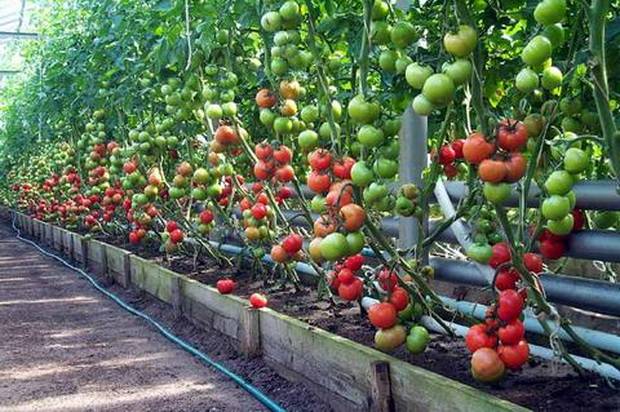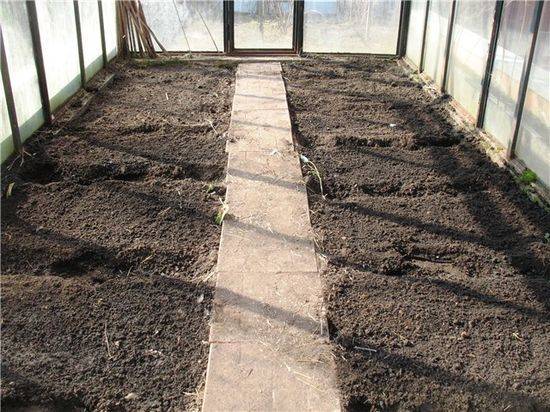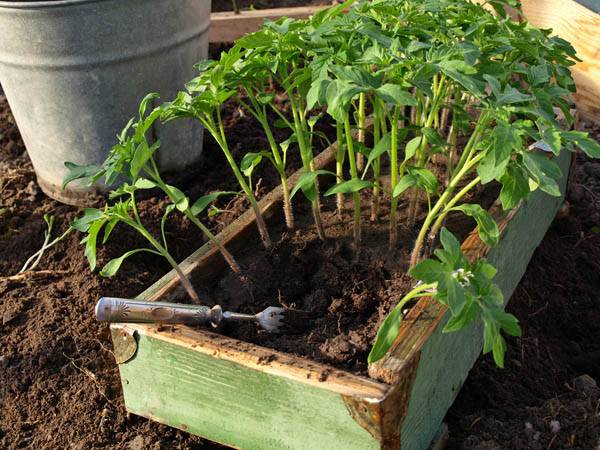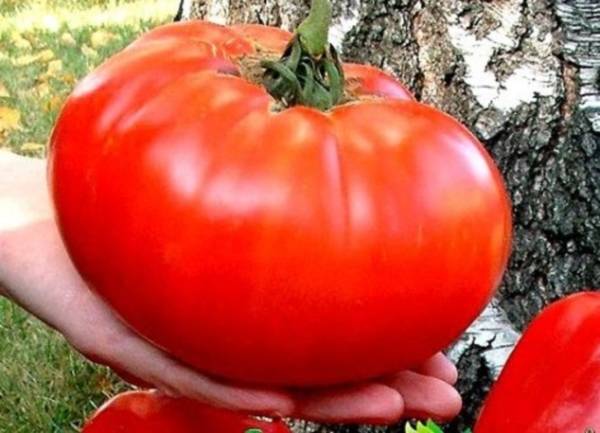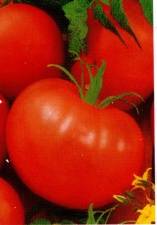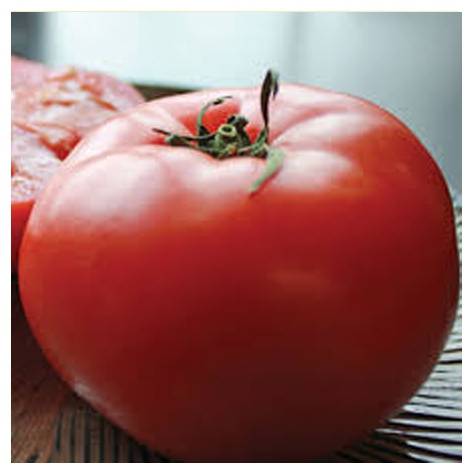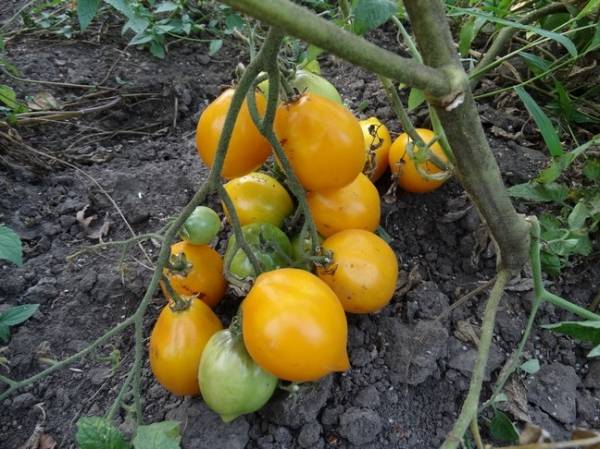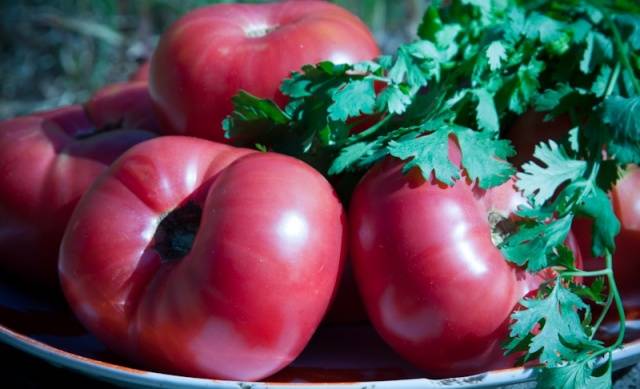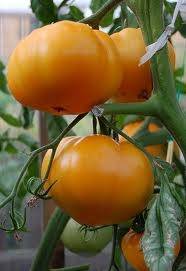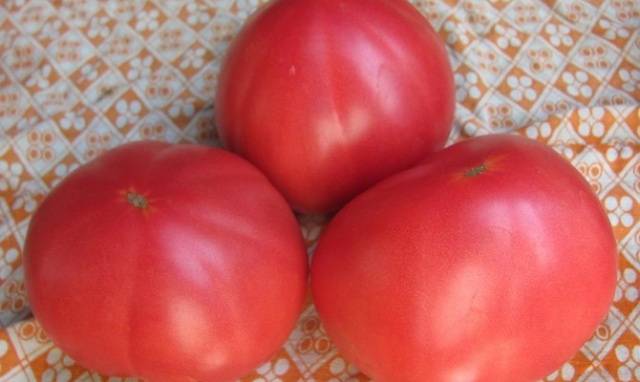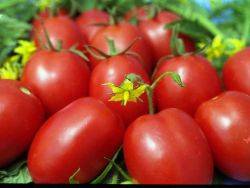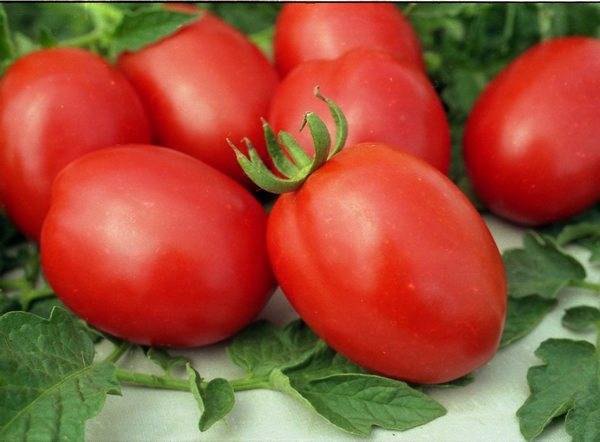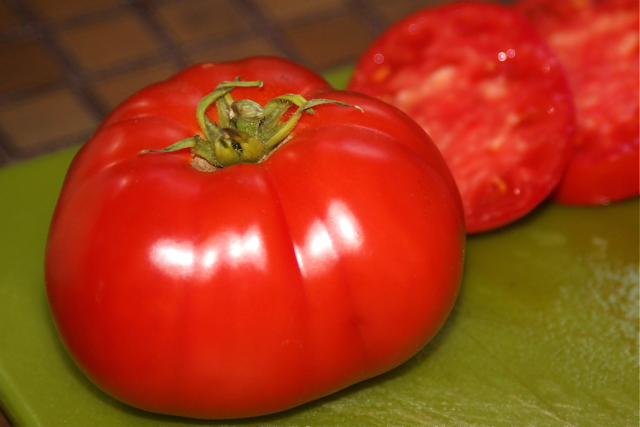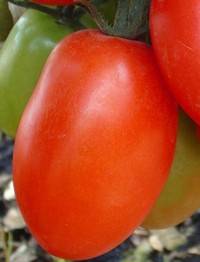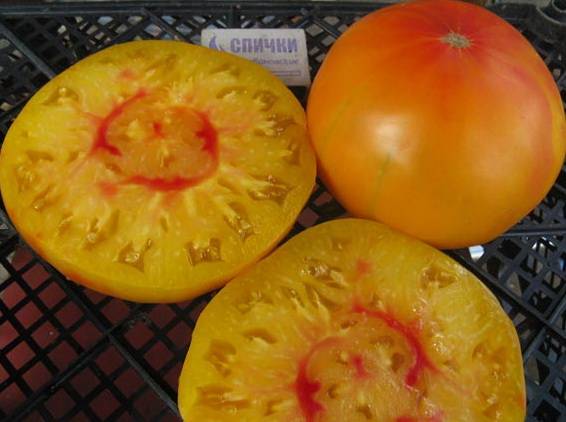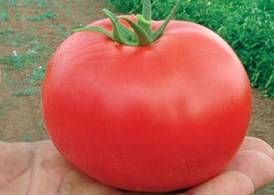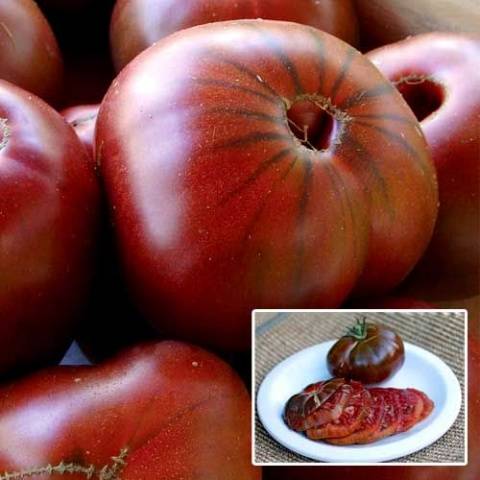Content
Growing late tomatoes is more justified on open land in warm regions. Here they are able to give almost all the fruits before the onset of frost. However, this does not mean that in areas with a cold climate, it is necessary to abandon the cultivation of this crop. Exist late varieties of tomatoes for greenhouses capable of producing good yields under cover.
Features of growing late tomatoes in a greenhouse
Planting late tomatoes in the greenhouse will give a positive result if a number of measures are taken to ensure the correct selection of seed material, the preparation of the greenhouse soil and the cultivation of strong seedlings.
What to look for when choosing tomato seeds
Seed shops are littered with various varieties of tomatoes. When choosing a late crop, it is necessary to carefully study the description of the variety on the seed package. Tomatoes specially bred by breeders for indoor cultivation are suitable for the greenhouse. The main feature of such tomatoes is active growth and self-pollination.
For hothouse Indeterminate tomatoes are best suited for cultivation. They are distinguished by intensive stem growth and long-term fruiting, which allows you to get the maximum yield from a small area. As for self-pollination, here you need to pay attention to hybrids. These seeds are labeled "F1" on the packaging. Hybrids do not require pollination by bees or artificially. In addition, breeders have instilled in them immunity that helps fight many common diseases.
Another point that requires special attention is in what version the tomato seeds are sold. They can be coated, in the form of small balls, and just clean grains. The first ones have already passed all the necessary processing, and they can be sown immediately into the ground. Before sowing, clean grains will have to be soaked in Fitosporin-M solution and a growth stimulator, and only then immersed in the soil.
How to prepare the soil in a greenhouse
A high survival rate of tomato seedlings and a bountiful harvest are possible with well-prepared soil. The easiest way is to buy ready-made soil in the store. It contains all the necessary trace elements for the active development of tomato. When self-manufacturing soil, it is necessary to take equal proportions of peat, humus and black soil. After mixing all the components, it is necessary to add 1 liter of sand per 1 bucket of the mixture, 1 tbsp. wood ash and 1 tbsp. l superphosphate.
The soil in the greenhouse begins to be refined 2 weeks before planting the seedlings. Tomato roots love an abundant supply of oxygen, so the whole earth must be dug deep. At the planting site, the old soil is removed to a depth of 150 mm. The resulting grooves are poured with a solution of 1 tbsp. l. copper sulfate diluted with 10 liters of water. Now it remains to fill in the purchased or independently prepared soil instead of the selected soil, and you can plant seedlings.
Growing seedlings of late tomatoes
Sowing seeds of late varieties of tomatoes for seedlings begins in February.
The prepared grain is sown into boxes with 15 mm grooves. It is better to buy soil mixture for tomato seedlings in the store. After backfilling, the soil is poured into the boxes with a humate solution.Before the seeds germinate, the boxes are tightly covered with a transparent film and placed in a warm place with a temperature of 22about C. It is necessary to ensure that the substrate does not dry out by periodically moistening it with water from a spray bottle.
After the sprouts appear, the film is removed from the boxes and a uniform light is directed so that the seedlings do not stretch. With the appearance of 2 full-fledged leaves, the plants dive, seating them in peat cups. So the tomato seedlings will grow for 1.5–2 months before they are planted in the greenhouse. During this time, it is necessary to make 2 fertilizing with fertilizers. 2 weeks before planting, the seedlings are hardened by daily removal to a cool place. At the time of planting, the height of the plants should be within 35 cm.
The video tells about the cultivation of late tomatoes in the greenhouse:
Review of late greenhouse tomatoes
So, we have figured out a little with the agricultural technology of the culture, it is time to learn more about the existing late varieties and hybrids of tomatoes intended for growing in a greenhouse.
Russian size F1
The hybrid is characterized by a powerful bush structure up to 1.8 m high. The indeterminate plant brings abundant tomato yields in heated greenhouses and under a cold film shelter. The hybrid is not grown in the garden. Fruit ripening occurs in 130 days. Tomatoes grow large, weighing 650 g. There are giants weighing up to 2 kg. A slight ribbing is visible on the slightly flattened fruit. There are 4 seed chambers inside the juicy pulp. On the stem, the tomatoes are tied with tassels of 3 pieces each. The large size of the vegetable does not allow it to be canned. This late tomato is processed into salads.
The first stalk garter is performed immediately one week after planting the plant in the greenhouse soil. The bush is not very branchy, but densely covered with foliage. When pinching, only 1 central stem is left, and all other shoots and lower leaves are removed until the first inflorescence. By the end of fruiting, the top is broken off from the plant to stop its growth. One plant is capable of producing up to 4.5 kg of tomato.
Market miracle
By the end of 4 months, you can be sure that the tomato is fully ripe. The crop is intended for greenhouse cultivation only. The bush grows up to 1.6 m high. The stem alone does not support the weight of the fruit and must be tied to a trellis or any support. The vegetable grows large, usually weighing 300 g, but there are large tomatoes weighing 800 g. Fleshy tomatoes have a decent presentation. The vegetable does not go for conservation, it is more used for processing and in cooking.
King of Kings F1
A new complex hybrid was developed for farms and household plots. Seed material cannot be obtained from it at home. The hybrid is a representative of giant greenhouse tomatoes, but open cultivation is allowed in the southern regions. Indeterminate plant grows up to 2 m in height. The bush is moderately leafy. During the pinching, 1 or 2 stems are left to the plant, tying them as they grow to the trellis. In an adult plant, the first cluster with tomatoes appears above 9 leaves, and all subsequent ones are formed after 3 leaves. The vegetable is considered fully ripe after 4 months. The plant is slightly affected by late blight and is considered fruitful. You can take up to 5 kg of tomatoes from one bush. Experienced growers have determined that the highest yield of a hybrid is observed when grown under a film. In glass greenhouses and polycarbonate, the yield is slightly lower.
Large, round tomatoes with a flattened top weigh from 1 to 1.5 kg. Tomato weighing less than 200 g is not found on the plant. Inside the fleshy red pulp, there are up to 8 seed chambers. The fruits are tied with clusters of 5 tomatoes each.A giant-sized vegetable is only used for processing or salads.
Citrus garden
This indeterminate tomato gives good results when grown in plastic greenhouses. The ripeness of tomatoes is observed after 120 days. The bush is very sprawling, when formed on the plant, up to 5 branches are left. The fruit is yellow in color and resembles lemons. The weight of one tomato is about 80 g, on the plant they are formed by tassels. Each brush can hold up to 30 tomatoes with a total weight of 2.5 kg. According to the application, the vegetable is suitable for any use, be it conservation or processing.
Yusupov
Chefs of oriental restaurants have chosen this variety for a long time. Huge fruits are successfully used for the preparation of salads and other national dishes. Indeterminate varietal tomato has no related analogs and hybrids. The bush is quite powerful, in a greenhouse it can grow up to 1.6 m in height. Growing tomatoes outdoors is allowed, but the height of the plant will be half that. The size of the fruit depends on where the culture is growing. The homeland of tomato is Uzbekistan. It’s there that he doesn’t grow less than 1 kg. It is typical for Russian regions to receive tomatoes weighing up to 800 g in greenhouses, and up to 500 g in the garden.
The first flowers on the plant appear in June, and the last ones in August. Usually, in tall varieties, tomatoes of the lower tier always grow more than the upper fruits, but not in the Yusupovskys. On the bush, all tomatoes are tied the same size. The red juicy pulp is covered with a thin skin through which the rays coming from the stalk are visible. There are few grains in the pulp. If you pick a green tomato, it is able to ripen on its own. But they cannot be transported and stored due to rapid cracking.
Long Keeper
A very late tomato variety recommended for greenhouse cultivation. In open beds, landing is possible only in the southern regions. The determinant plant grows up to 1.5 m in height. Tomatoes on the bush ripen only on the lower tier, all other fruits are picked after 130 days green and placed in boxes for ripening... In a cool dry cellar, tomatoes can be stored until March. The bush is formed by removing the stepsons, leaving only one main stem, which, as it grows, is tied to a support.
Tomatoes usually grow up to a weight of 250 g, but occasionally there are tomatoes of 350 g. The shape of the vegetable is perfectly round, sometimes slightly flattened tops are found. Tomatoes are almost white at harvest. After ripening, their flesh turns pink. For the entire growing season, the plant is capable of producing up to 6 kg of tomatoes.
Grandma's gift F1
Usually the stems of this hybrid are 1.5 m in height, but sometimes the stem is able to stretch up to 2 m. The indeterminate plant has a powerful stem with an edge. The branches are densely covered with foliage. Up to 7 tomatoes are tied on each branch. The plant has a highly developed root system. The first flower appears above 7 leaves, and all subsequent ones every 2 leaves. The tomato is very firmly adhered to the stalk. Ripening occurs at about 130 days. The hybrid can be grown in any type of greenhouse, just not in the garden.
Ripe tomatoes are sweet with a peculiar sour taste. There are 8 seed chambers inside the tender pink pulp. Ribs stand out on the walls of a rounded tomato. Tomatoes grow large, weighing up to 300 g. The vegetable lends itself to transportation and storage without deterioration of the presentation. Proper care allows you to get up to 6 kg of tomatoes from a plant.
Podsinskoe Miracle
This variety was bred by amateurs. An indeterminate plant grows up to 2 m in height outdoors, and even higher in greenhouse conditions. The crown of the tomato is spreading, requires frequent tying to the trellis. All unnecessary shoots must be removed.Tomatoes are often called cream because of their shape. Fruits are rather large, weighing up to 300 g. Few seed chambers are formed inside the pink pulp of tomato. The yield indicator is up to 6 kg per plant. The plucked vegetable can be stored and transported.
Bravo F1
The hybrid is popular with the owners of glass and film greenhouses. A ripe crop will delight the culture no earlier than in 120 days. An indeterminate plant practically does not lend itself to infection by viral diseases. Tomatoes are poured in large mass up to 300 g. The pulp is red, juicy, covered with a smooth skin.
Instinct F1
The hybrid produces small tomatoes weighing up to 130 g, which are well suited for preservation and pickling. Ripening of the crop occurs in 4 months. The plant is indeterminate, requiring a garter to the trellis and pinching. Tomato pulp is sweet and sour, red. The shape of the vegetable is spherical with slightly flattened tops.
De barao
The indeterminate popular variety is successfully grown both in greenhouses and on the street. There are 4 subspecies of this tomato, differing only in the color of the fruit. Some vegetable growers plant several tomato bushes with yellow, red, dark brown and pink fruits in the greenhouse for beauty. The plant grows up to 2 m in height outdoors and about 4 m in a greenhouse.
Tomatoes are formed by brushes of 7 pieces each. Fruit weight is small, maximum 70 g. Usually 10 clusters with tomatoes are formed on a bush, sometimes a little more. The growing season of the culture is long. In greenhouse conditions, the yield indicator is up to 40 kg / m2.
Premier F1
The hybrid has an indeterminate type of bush, densely covered with foliage. The height of the main stem reaches 1.2 m. The tomato is successfully grown in different types of greenhouses, but planting outside is possible. The vegetable ripens after 120 days. The first flower is laid above 8 or 9 leaves. Fruits are formed in clusters of 6 pieces each. The yield of the hybrid is quite high, reaching 9 kg / m2... The plant does not require special care, it adapts to different growing conditions.
Round-shaped tomatoes grow large, weighing more than 200 g. The walls of the fruit have a weak ribbing. The flesh is red, not too firm. More than 6 seed chambers are formed inside the tomato pulp. Plucked tomatoes must be used immediately for their intended purpose. They do not go to storage and conservation.
Rocket
This determinant tomato variety is most often grown in the southern regions on the street. However, the culture is popular in the northern regions as well. Here it is grown in heated greenhouses. Bushes undersized, maximum 0.7 m in height. The grower will be able to enjoy the first harvest of tomatoes in 125 days. The plant is resistant to all types of rot. Fruits are small, elongated, weighing up to 60 g. Inside the red dense pulp of a tomato there are 3 seed chambers. A vegetable plucked from a plant can be stored and transported for a long time without losing its presentation.
Small-sized fruits are popular among housewives engaged in conservation and pickling. Not a bad tomato and fresh on the table. As for the yield, at first glance, the figure of 2 kg per bush seems to be very low. However, such undersized bushes by 1 m2 planted up to 6 pieces. As a result, it turns out from 1 m2 about 10 kg of tomatoes can be harvested. For a determinant plant, this is normal.
Grapefruit
A distinctive feature of the variety is the potato leaves on the plant. Indeterminate bushes grow up to 2 m in height. Fruit ripening later up to 180 days. In a heated greenhouse, the tomato will bear fruit throughout the year.The culture is resistant to disease, but treatment with copper sulfate from phytophthora will not hurt. For the entire growing season, the plant is capable of producing a maximum of 15 tomatoes, but they are all very large. The mass of a vegetable reaches from 0.6 to 1 kg. Although even with such indicators, the variety is not considered a high-yielding variety. Among many gardeners, there was not a single bad comment about this tomato. The only negative is the tomato ripening for too long.
The color of the fruit matches the name of the variety slightly Mixed on the peel, yellow and red are reminiscent of grapefruit. The pulp has the same shades. The tomato is very tasty, suitable for cooking various dishes, but the juice will not work out of it due to the dense pulp. There are very few grains in tomato, and even seed chambers are absent. The harvested tomato must be stored for a short time.
Bobcat F1
The Dutch hybrid is widely recognized among domestic vegetable growers. Tomatoes are grown by many farmers for the purpose of selling. The determinant crop is capable of bearing fruit in all types of greenhouses and outdoors. The plant grows up to 1.3 m in height and starts producing ripe tomatoes after 130 days. Breeders instilled in the hybrid immunity that protects the plant from damage by many diseases. In good greenhouse conditions from 1 m2 you can get up to 8 kg of tomato harvest, but usually this figure varies between 4-6 kg.
A fully ripe tomato can be recognized by its bright red skin color. By definition, a hybrid refers to large-fruited tomatoes, although one tomato weighs no more than 240 g. Very dense pulp allows you to use the vegetable for any home preservation. However, despite its high density, a lot of juice can be squeezed out of a tomato. Up to 7 seed chambers can be located inside the pulp.
Brown sugar
A specific variety of tomato that bears fruits of dark brown color. Tomatoes are considered ready to eat after 120 days. Indeterminate culture in greenhouse conditions is capable of growing strongly and stretching up to 2.5 m in height.On the street, the size of the bush is smaller. The crown is not oversaturated with foliage, the fruits are formed in clusters of 5 tomatoes each. The yield indicator is up to 7 kg / m2... Tomatoes grow spherical, smooth, without the presence of ribbing. The approximate weight of one vegetable is 150 g. Despite the unusual tomato color, the pulp is quite tasty and healthy with a low content of grains. The tomato is subject to storage, transportation and all types of processing.
Vladimir F1
This hybrid is not very suitable for polycarbonate greenhouses. The culture bears fruit well under glass or film. Ripening of the first tomatoes is observed after 120 days. The culture is slightly affected by diseases, resistant to all types of rot. Round-shaped fruits weigh about 130 g. Tomato can be stored for up to 7 weeks. During transportation, the fruit does not crack. The yield index from 1 plant is 4.5 kg.
Conclusion
In the video, the vegetable grower shares the secrets of growing tomatoes:
Among many vegetable growers, greenhouse cultivation of late tomatoes is not considered very popular, but still, a place should be allocated for several bushes. Late varieties will provide a supply of fresh tomatoes for the whole winter.
